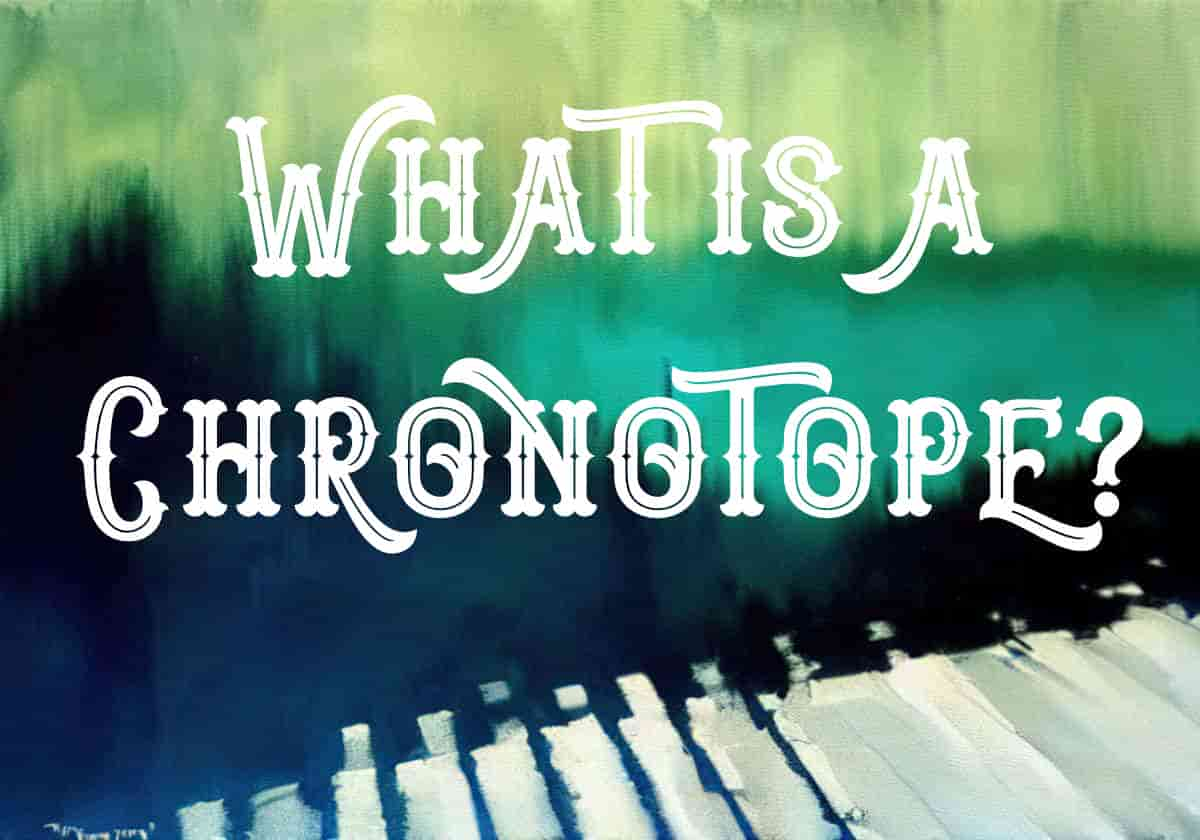According to Russian literary theorist Mikhail Bakhtin (1895–1975), a chronotope is a type of image which fuses space in a time in a concrete and meaningful way. He introduced this term in 1937.
The word chronotope comes by way of Russian from the Greek words for time and place. Think chronology + topography smooshed together. But when you think ‘topography’, don’t limit yourself to ‘the arrangement of physical features’. Broaden that notion out. Think about space in its broadest sense.
Here’s the important thing: Time and space can’t be separated. Each is as important as the other when it comes to understanding or creating a text, or for understanding how the universe works. The chronotope locates us in a specific time AND space.
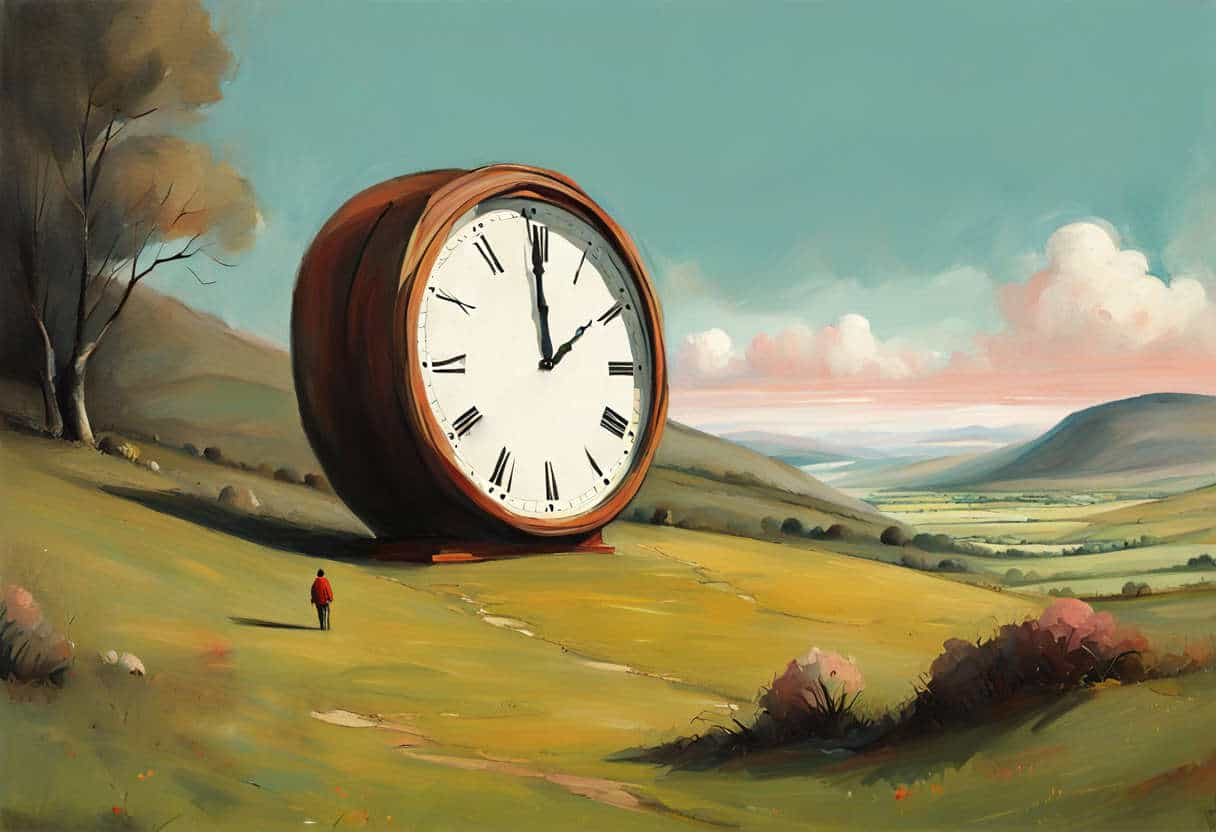
THIS IS EINSTEIN’S DOING
No coincidence that in 1916, Einstein had published his General Theory of Relativity, right? Einstein’s theory replaced Newton’s, in which space and time were independent. Along comes Einstein and teaches us the concept of space-time. Note the hyphen.
In relativity, it’s no longer true that space and time have separate, objective meanings. What really exists is space-time, and slicing it up into space and time is merely a useful human convention.
One of the major reasons why relativity has a reputation for being difficult to understand is that our intuitions train us to think of space and time as separate things.
Qanta Magazine, How To Think About Relativity
So, Bakhtin borrowed the term from Einstein. However, the things Bakhtin said about space-time (chronotopes) are not all that relevant in contemporary literary analysis. Bakhtin argued that:
- the individual is inseparable from the collective
- birth and death are inseparable
- the rhythms of agriculture are key to understanding human society
- the chronotope is all about future, collective growth rather than instant, individual gain
In contemporary individualistic societies no longer quite so tied to agriculture, you can probably see why Bakhtin’s explanation of his own concept no longer works too well across cultures, especially WEIRD ones. It harks back to colonist attempts to inscribe the rhythms of commercial agriculture and the weekly patterns of European Christian civilization (calendar time, clocks to measure the passage of time, Sunday as a day of rest, etc.) on other cultures. “The Colonial Chronotope”.
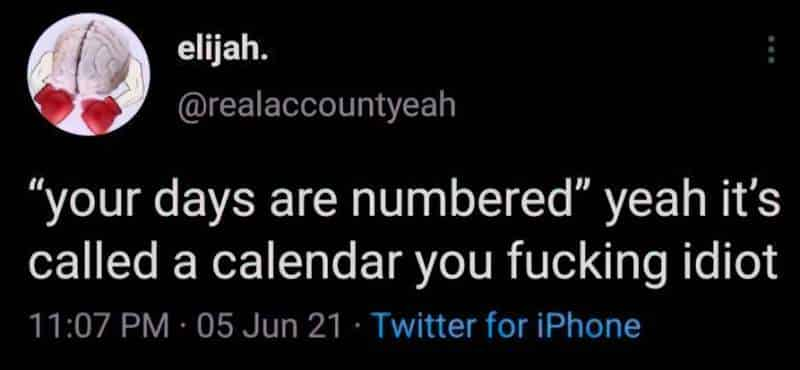
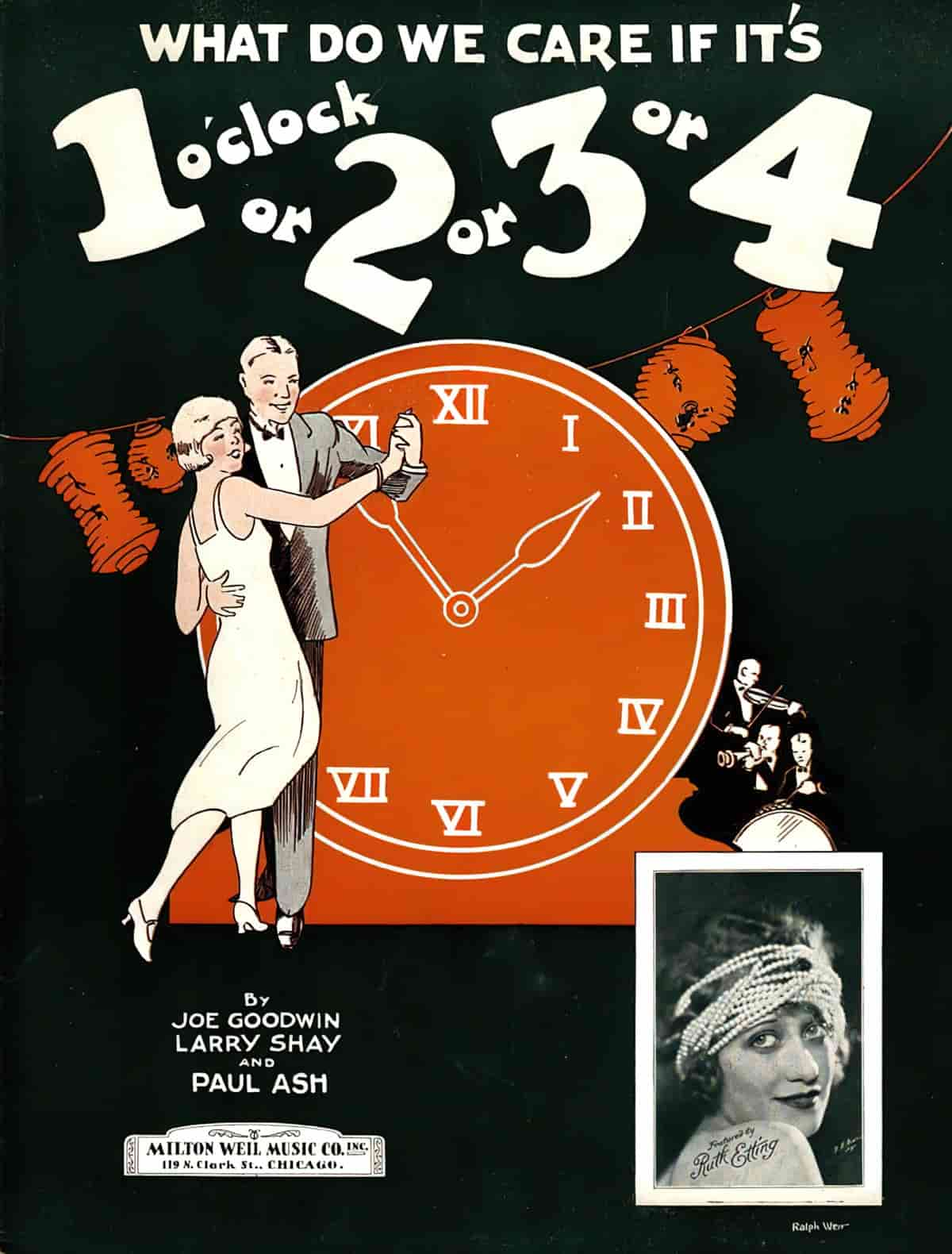
WHAT DOES THE CONCEPT OF CHRONOTOPE MEAN FOR UNDERSTANDING LITERATURE?
- The chronotopic principle: Narrative is moulded by social values (whether common or conflicting) and by world views or mentalities. E.g. Fairy tales of any given era reflect the virtues that keep communities together.
- Time and space are fundamental categories of human perception and this is reflected in the stories we tell each other.
- Sociologists, psychologists and anthropologists also find this term useful because human behaviour cannot be separated from context.
- Other works in the real world which impact the meaning of any individual text are called intertexts. Chronotopes add an entire new level to the concept of ‘intertext’. No work stands on its own when it comes to interpretation. Chronotopes work at a deeper level, and are so prevalent and influential in a culture that there’s no way stories can ‘stand alone’. Chronotopes are what make fiction ‘contagious’.
- If something in a story is located outside time and space, it is ‘achronotopic’.
- If different ‘clocks’ (types of time) coexist in a single site, Bakhtin calls this a ‘multitemporal’ or ‘synchronous’ site.
- The concept of multitemporality can also relate to several times existing within an individual. In a space, synchrony implies the co-existence of the past, present and future. But within the individual, we’re now talking about a complete focus on the present moment. This is an important concept in stories about humans who have lost their free will. If you have no free will, you can only live in the moment. Everything important converges in the present. Nothing outside the present moment is of any importance at all.
- Someone with no free will, living in the moment, can only ever be a flat character rather than a rounded one. (Bakhtin had his own words for flat and round: Flat characters were ‘epic’ and rounded characters were ‘novelistic personages’.)
WHAT’S THE DIFFERENCE BETWEEN A TROPE AND A CHRONOTOPE?
Tropes are like a massive box of Lego. Each brick represents a small unit of story.
You can buy the ‘fairy tale’ set, the ‘science fiction’ set and so on, but storytellers can pick from any set to tell their own unique story. Some tropes (bricks) fit together more naturally than others. All are reusable and reused, across time, and often across cultures.
When, for instance, is the ‘chronotope’ merely a ‘trope’? The difference may be a question of scale and context: tropes can be variously employed for an array of poetic effects in a variety of settings, whereas, as Bakhtin notes, with the chronotope ‘we will devote our entire attention to the problem of time (the dominant principle in the chronotope)’.
Track Changes
To continue with my Lego example, the ‘box of bricks’ is the chronotope, and the individual bricks are the tropes.
Let’s imagine a box called Supranormal at the Lego store. We’ll call that the Supranormal Chronotope Box Set.
In a supranormal chronotope, the ordinary world becomes defamiliarised for the audience. For instance, the regular, everyday world might have weird things in it, like unexpected architecture or otherworldly creatures. The supranormal world may be completely distinct from the normal world (e.g. demarcated by a fantasy portal). Or, storytellers might create a ‘multispatial site’, which fuses the space of two sites into one. In that case, nothing seems familiar.
Let’s take a common storyline in a certain category of fairy tale. In this story, young woman is abducted by a troll. In this supranormal world, she suffers amnesia, is invisible to humans. She forgets everything she knew about her religion and ordinary life. She’s reasonably happy living with the troll because she doesn’t know any different.
But one day she hears some church bells and starts to remember her past. She goes to the church, is gradually ‘seen’ by members of her community. When they realise it’s her, they grab her, and prevent her from being re-abducted by the trickster troll.
In that example, supranormal (transcending the normal) is the chronotope, and all of those details are the tropes: abducted by troll, slowly returning amnesia, invisibility etc.
THE IMPORTANCE OF TIME IN A CHRONOTOPE
Oftentimes in these fairy tales, time works differently in the supranormal world. (Generally, time goes more slowly on The Other Side.) Religion comes into it; the human world is punctuated by Christian tradition, whereas the supranormal world has none of those markers, and abducted characters lose their sense of time as a result.
Fairy tale time has been called ‘mythos’, compared to regular, everyday time as measured by a clock, called ‘chronos’.
TROPES CLUMP TOGETHER UNDER CHRONOTOPES
Back to my Lego bricks analogy. The concept of separate bricks has its limitations, because, in storytelling, a single trope (brick) relates to others. No brick can ever be pulled completely apart, standing loose, completely on its own. Think instead of magnetic Lego bricks, which tend to clump together with other, related bricks even when you try to pull them all apart when tidying up, throwing them all into the same bag.
For instance, in the supranormal chronotope of fairy tales, the invisibility trope relates to ideas around deceitfulness and kleptomania. The reason? Everyone who understands the chronotope understands that when humans have been captured by supranormal beings to the point where they’ve become invisible, other forms of supranormal immorality rub off on them as well. For instance, trolls become invisible in order to steal food.
CHRONOTOPE AND GENRE
Each genre or era of storytelling has its own set of chronotopes whether we’re talking about:
- Folk and fairy tale
- The Ancient Greek novel
- Medieval chivalric romance
Then there are the individual motifs.
SPECIFIC EXAMPLE: THE CHRONOTOPE OF THE OPEN ROAD
This is one of Bakhtin’s examples of an individual motif, and is probably the best one to pick for illuminating the concept of chronotope. Here goes, you’ll have seen this in storytelling many times before:
Paths or roads in folk narratives symbolise the path of life.
The open road is a metaphor of life as a solitary journey. The Every Man journeys along a path with a certain amount of time allotted to his life, and a limited number of things to see. The road trip is a condensed lifetime.
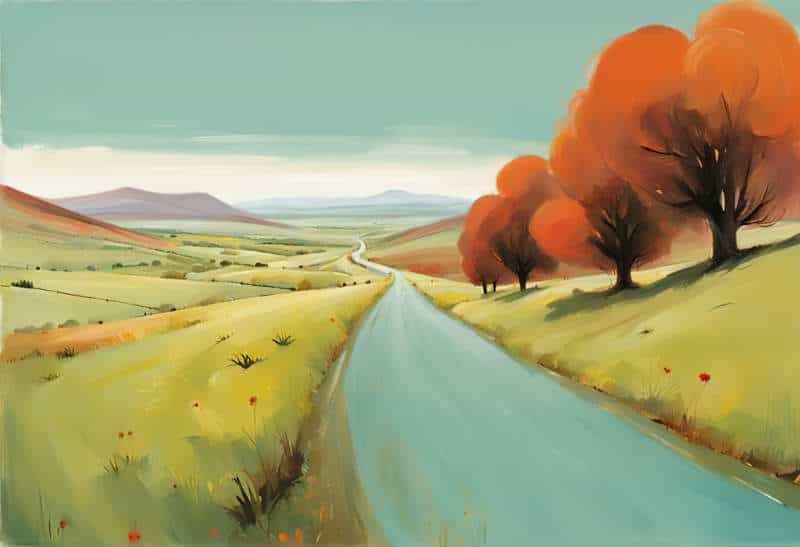
Tropes associated with the chronotope of the open road
- Getting lost on a back road and meeting some kind of death cult (“Children of the Corn“, The Ritual)
- Picking up an unusual hitch-hiker (“The Hitch-hiker” by Roald Dahl)
- Stopping for the night at a creepy inn (See: Hotels and motels in Storytelling, Psycho)
OPEN ROAD > CROWDED CITY STREETS
In many 19th century novels, the ancient chronotope of the open road became crowded city streets. On the open road, heroes came face-to-face with opponents, allies, false friends and false enemies. Each encounter was memorable and significant. But the city street works differently. Characters now meet many characters, and briefly.
By looking at the evolution of the open road chronotope, the relevance of time and space becomes clearer:
- SPATIAL CHANGE: The space of the urban street chronotope changes from sparsely populated to crowded.
- CHRONOLOGICAL CHANGE: The time of the urban street changes from meaningful encounters with others to brief, almost imperceptible encounters with passers-by. Time is rapid, fast-paced and infinitesimally divided.
As the chronotope of the open road evolved, Victorian novelists had to invent new ways of telling stories. They now had a superfluous number of characters who faded into insignificance, but who were still necessary to flesh out the sense of an authentically crowded city for readers.
There you have it. That’s why literary peeps find the concept of chronotope useful.
THE CHRONOTOPE OF THE THRESHOLD
Thresholds in various kinds of stories link the narrow, the confined and the private with the extensive, the public, the city.
(The threshold is an example of a ‘liminal space‘.)
TROPES ASSOCIATED WITH THE CHRONOTOPE OF THE THRESHOLD
- fantasy portals
- crossroads
- devils and devil stand-ins inviting humans into contracts in which they will do the devil’s bidding
- SPATIAL IMPORTANCE OF THE THRESHOLD: A threshold takes up a place in concrete space, whether it’s a staircase, a fantasy portal or whatever.
- TEMPORAL IMPORTANCE OF THE THRESHOLD: Thresholds have a temporal dimension which becomes clear when humans pass through them en route to somewhere else. Stairways are always transitory.
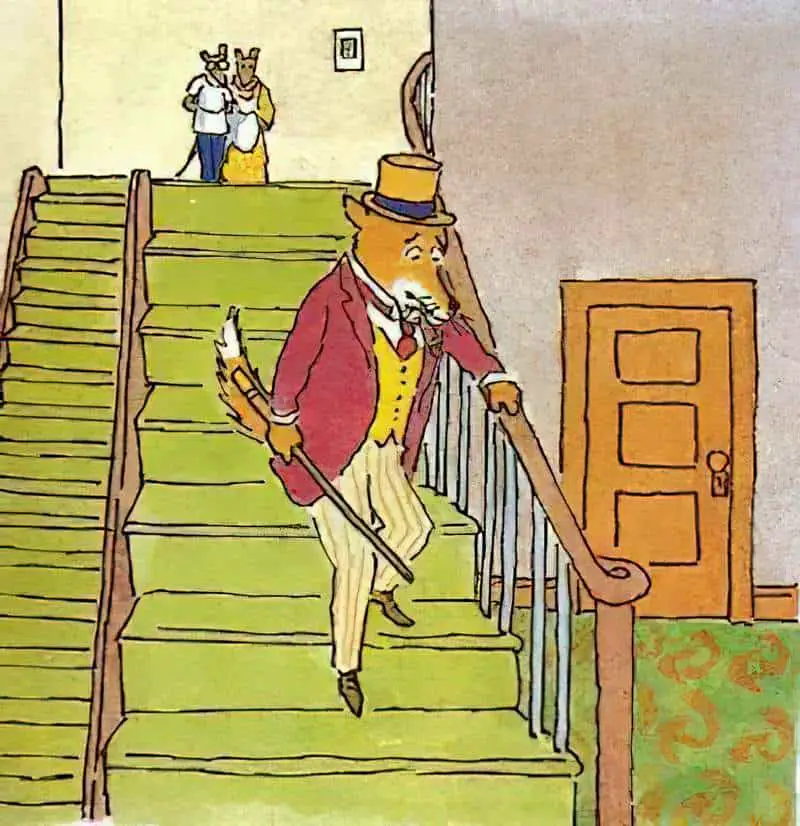
To continue with the specific example of a stairway as example of (threshold) chronotope, a stairway is just a stairway without cultural significance until we investigate where the the staircase leads us, and we place it in both time and space.
A stairway can be a zone of a degrading lack of privacy.
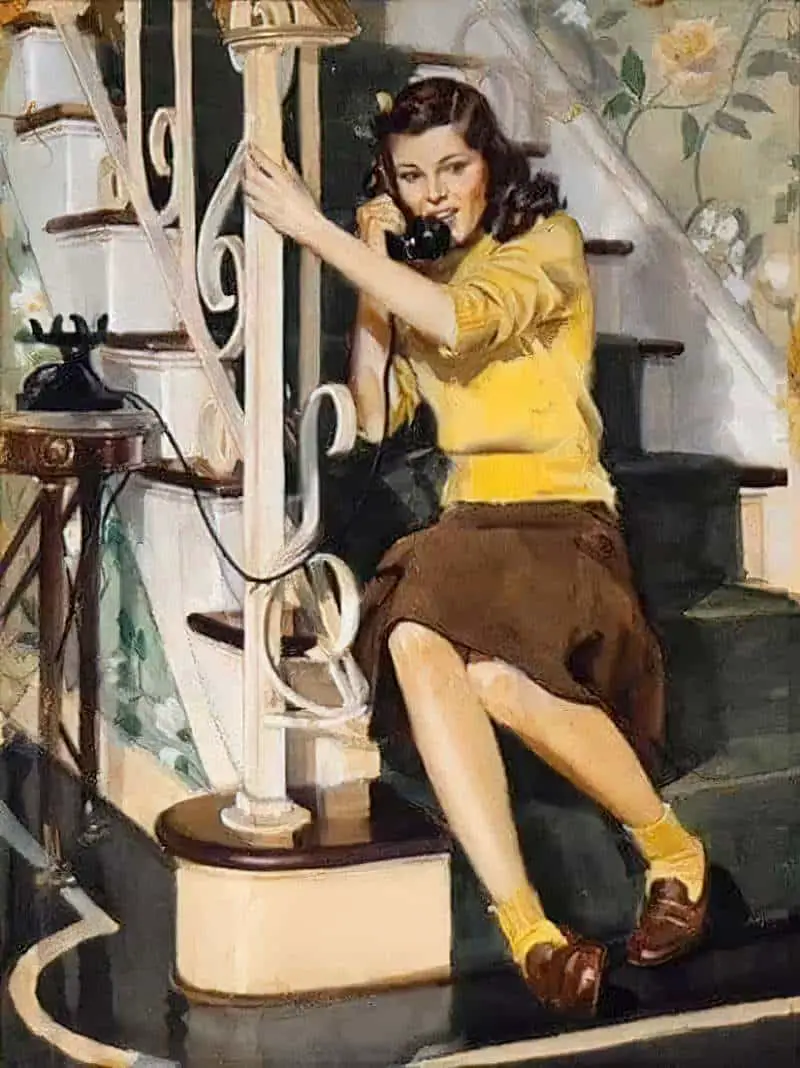
The stairway is uncanny. You can rarely feel at home on a stairway. In The Dream House, a stairway takes inhabitants from the more public area of the downstairs part of a home to the more private upstairs part of a home, serving to link the public and the private.
